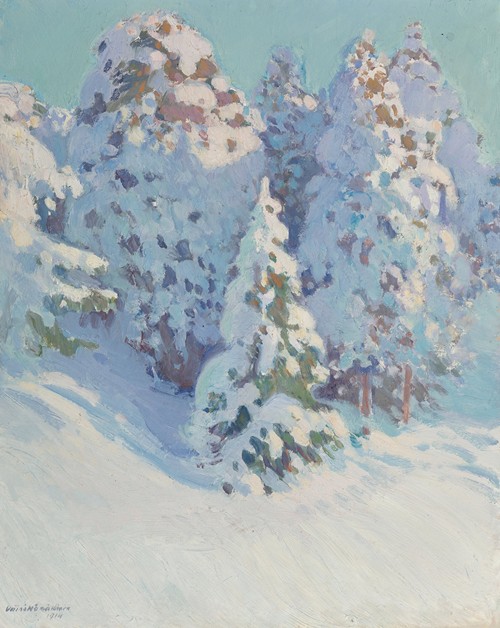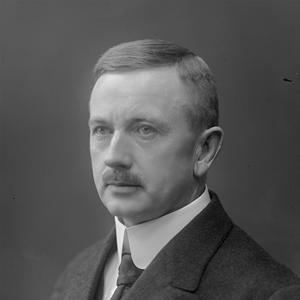


Väinö Hämäläinen
Väinö Aleksanteri (Aleksander) Hämäläinen was a Finnish painter, graphic artist and illustrator.
His oil paintings and graphic art have been seen as influenced by the golden age of Finnish visual art.
Hämäläinen's parents were Lauri Hämäläinen, organist of the Old Church in Helsinki, and his wife Emma née Kekoni. She had three younger sisters. Her husband was Helmi o.s. Helmi Mäkinen. When her father died in 1888, her mother remarried to the artist Albert Gebhard, who became her stepfather and teacher. Her son Lauri Hämäläinen was also an artist.
Hämäläinen studied under Albert Gebhard at the School of Drawing of the Finnish Art Association from 1898 to 1899. After graduating in 1900, he travelled to France, where he studied at the Académie Colaross in Paris under Eugène Carrière.
He made three study trips to Italy between 1901 and 1904.
Hämäläinen painted altarpieces for Töysä Church in 1906, Nurmes Church in 1913, Nurmo Church in 1914 and Miehikkälä Church in 1924. In Helsinki, in the baptistery of Kallio Church, his painting Crucifixion is on display. His other well-known works are Kanteleenspielertaja (1901), Lemminkäinen and the Moose of the Coal (1902), Myllykylä in Winter (1906), Vuolenkoski (1910) and Heikki Klemetti and the Song of Finland (1925). He was also a draughtsman and illustrator.
The altarpiece of the Rautalamm church, which was important to Väinö Hämäläinen, was left unfinished after the artist's death in 1940. The painting was finished by his son, artist Lauri Hämäläinen.
Aleksis Kivi's Shepherdess (1907) is one of his earliest works. He designed the charity stamp for the Tuberculosis Society in 1910. Arvid Lydecken's The Wonderful Fishing Trip, with illustrations by Väinö Hämäläinen and songs composed by him, is still considered one of the best Finnish picture books. He also illustrated Christmas magazines and textbooks.
Between 1915 and 1916, Hämäläinen built a National Romantic-style studio at Oinassaare on Lake Vesijärvi near Lahti. The villa overlooked Lake Vesijärvi, and he painted the landscape in several of his works. His brother-in-law was Pekka Halonen, whose influence can be seen in his work.
The Central Archive of Fine Arts has a photographic collection of 2050 photographs by Väinö Hämäläinen.
